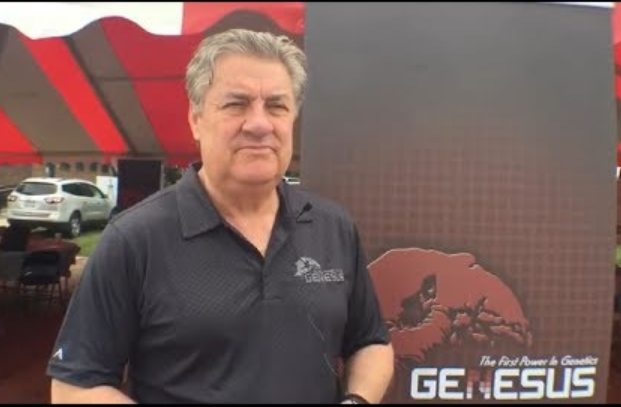



Jim Long Pork Commentary: Go figure - fewer hogs means less export
Last Friday, lean hog futures decreased in some months the limit. The market story was primarily due to US pork exports the week of Christmas, decreasing about 10,000 tonnes from the previous few weeks.God help the stupidity of so many futures traders, in 2017 and 2018, exports declined 10,000 tonnes during Christmas week. It’s not a market correction it’s a reality of logistics.
Historically, the week of New Year is also lower than the first full week of the new year export numbers released. One other factor, both the week of Christmas and New Year have fewer hogs slaughtered.
- Christmas week was 2,029,000;
- New Year week 2,293,000.
- Prior weeks were in the 2.8 million range.
- Almost 1.3 combined fewer hogs in the last two weeks.
Go Figure- there were fewer exports; there was less to export.
It’s like saying there is less ASF in China now. Of course there is, half the pigs are dead, there are less to die.
January is now here, the holidays are over. Now the fun will begin. Tyson and JBS are on the brink of being Ractopamine free and able to export to China. Combined 180,000 slaughter hogs per day with new market potential. These are smart companies, the only reason they would have had going to Ractopamine free is access to China market. No other country in the world that matters in US pork exports cares about Ractopamine.
What to watch in the next few weeks is hog slaughter numbers relative to carcass weights. We would expect a rapid decline in slaughter weights if US Packers continue at a pace of 2.8 million head per week. If hog marketing’s decline, weights will not decline as rapidly but total weekly pork tonnage will decline pushing hog prices higher.
We expect over the coming weeks Gross Packer Margins to decrease. According to DTN Agdayta, they peaked near $70 a head in November and have since fallen under $50. As hog numbers decline so will Gross Packer Margins. We only have to go back to last summer when they were below $20 per head.
In the commodity business, it appears everyone gets a chance to ride on the wheelbarrow
Genetic Company Gossip
We are in the Swine Genetic business it’s our life and passion. Here’s where we see the business in 2020:
Genus-Pic:
CEO Karim Bitar resigned as CEO after eight years. He left to go to a human medical company. After exhaustive search Genus appointed CFO Stephen Wilson as CEO. PIC is the largest swine genetic company in the world. They claim in their annual report to genetically influence 150 million pigs per year and have 24 percent of the genetic industry. Not sure which number is correct, the world had about 1.2-1.3 billion hogs per year in 2018. 150 million is about 12 percent.
According to the Genus annual report, PIC also dealt with “higher customer credits arising from a few contract farm locations.” This was probably due to non-estrus issues in North America.
PIC also touted the Danish “Mollevang-inflicted PIC 800 Duroc line.” Our translation - we got Danish genetics to improve, our own genetic team wasn’t keeping up.
As a public company, Genus-PIC publishes its financials.
Genus Statutory profit before tax. – British Pound
2015 £ 57.8 m
2016 £ 68.9 m
2017 £ 40.7 m
2018 £ 7.8 m
2019 £ 9.9 m
Topigs-Norsvin:
The combination of two co-ops, one in Norway and the other in the Netherlands, also had their CEO leave last year. Martin Bijl-CEO left in August to join Royal Barenbrug Group, an international grass, and forage seed company. Two people, the CTO and CFO are leading Topigs-Norsvin until they find someone to become CEO.
We find it interesting that both the CEO of Genus-PIC and Topigs-Norsvin left the swine industry. One to medical devices the other to grass seed. Obviously Pigs were not their passion.
Danish:
We quote from PIC Annual Report:
“The porcine market also saw significant changes in FY 19. The break-up of one of PIC’s main global competitors, Dan Avi into three companies has reshaped the European market.
Dan Avi continues to operate as a smaller rebranded company called Danbred.
A new competitor, Danish Genetics, has been created by former Dan Avi nucleus breeders and multipliers.
Lastly, Mollevang Genetics partnered with PIC, starting from July 2016.”
To sum it up, once one company, now three. Deluded Genetics and resources is the reality.
Genesus:
- CEO has not resigned. The current CEO has been in swine business all his life, no intention to sell grass seed.
- Genesus now works in 17 languages, production in 10 countries and has quadrupled sales in the last ten years.
- Plan to keep every customer and add new ones, one at a time. Whether it be USA, Canada, China, Nigeria, India, Mexico, France, Spain, and Russia - on and on.
- Every day get up and make better pigs and then get them sold.
- We are all pig guys.
More from Genus- PIC Annual Report:
“We are also the only listed porcine and bovine genetics company globally giving us strategic access to finance. Our competitors are largely private companies and farmer owned cooperatives.” - quoted from PIC Annual Report
Market Share (according to PIC annual report)
PIC | 24% |
Competitor 1 | 12% |
Competitor 2 | 9% |
Competitor 3 | 3% |
Competitor 4 | 3% |
Competitor 5 | 3% |
Internal progress | 12% |
Other | 34% |
Who knows if the above percentages are correct. These are estimates at best. The only thing for sure is the swine genetic business has consolidated over the last ten years and will continue too.
Only genetic companies with the will, people, capital, technology, and customers will be left standing in 2030.








